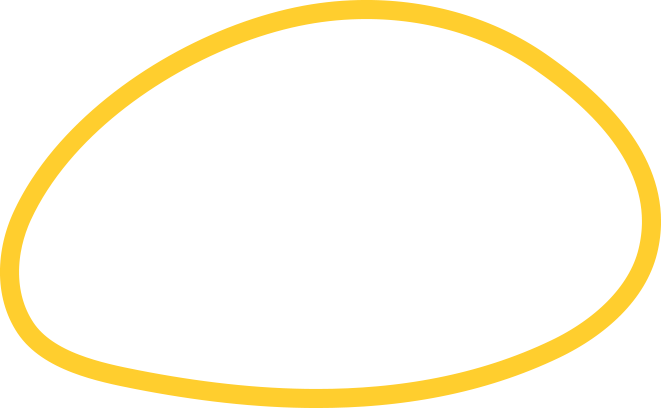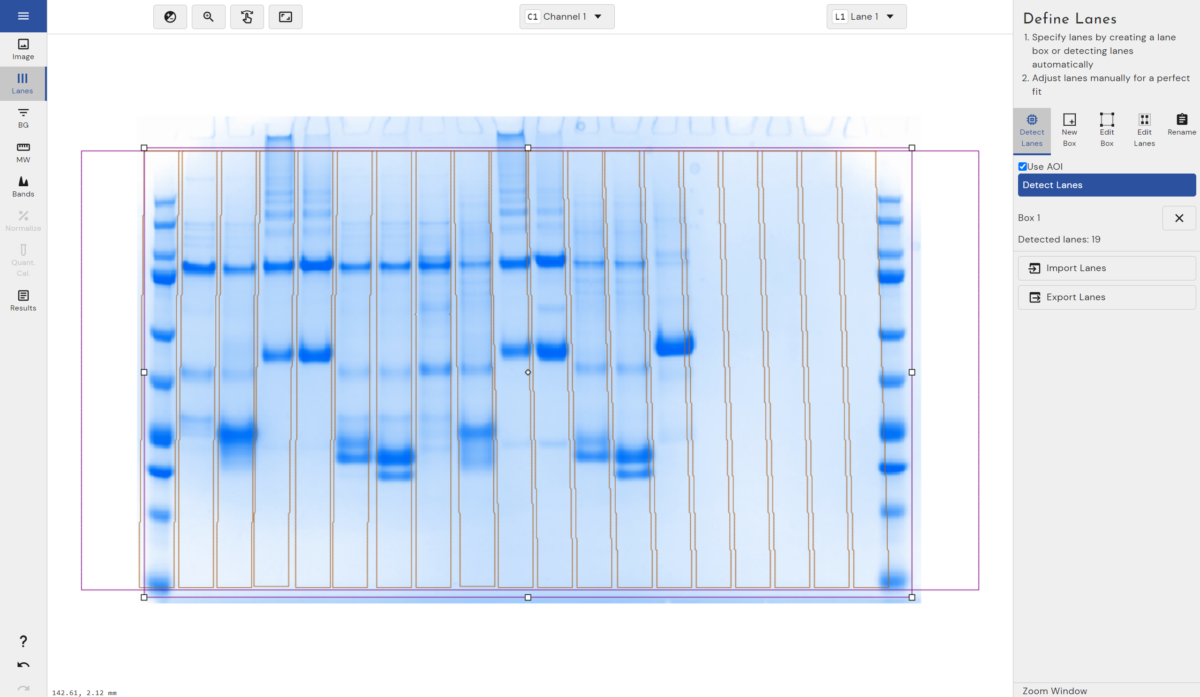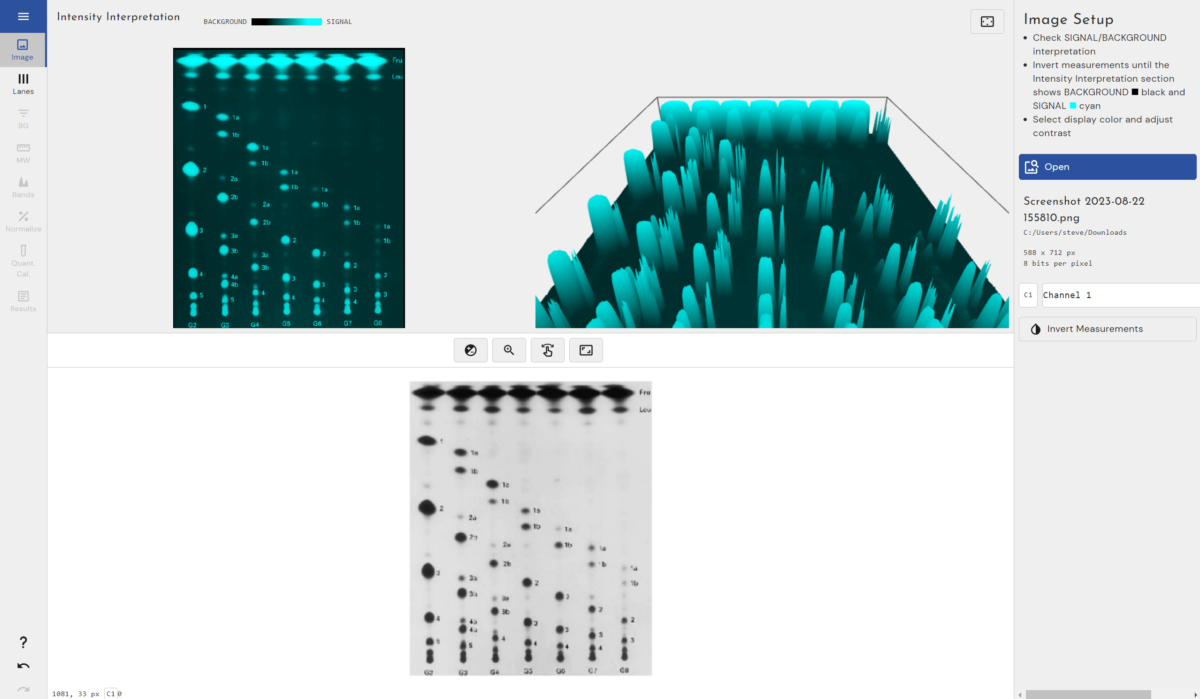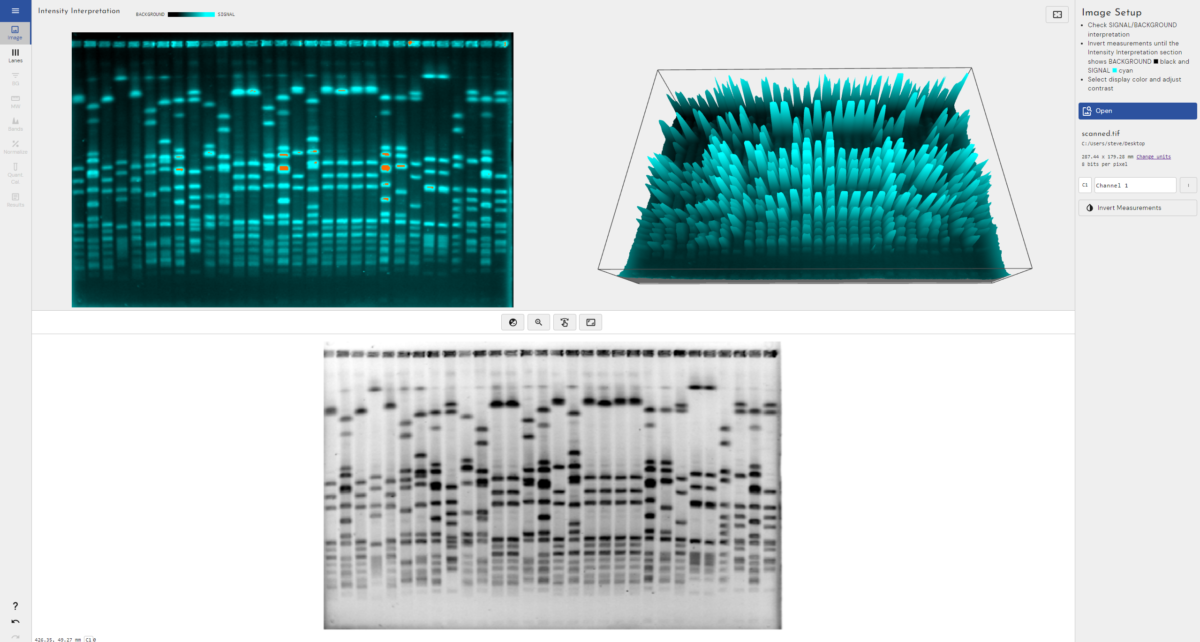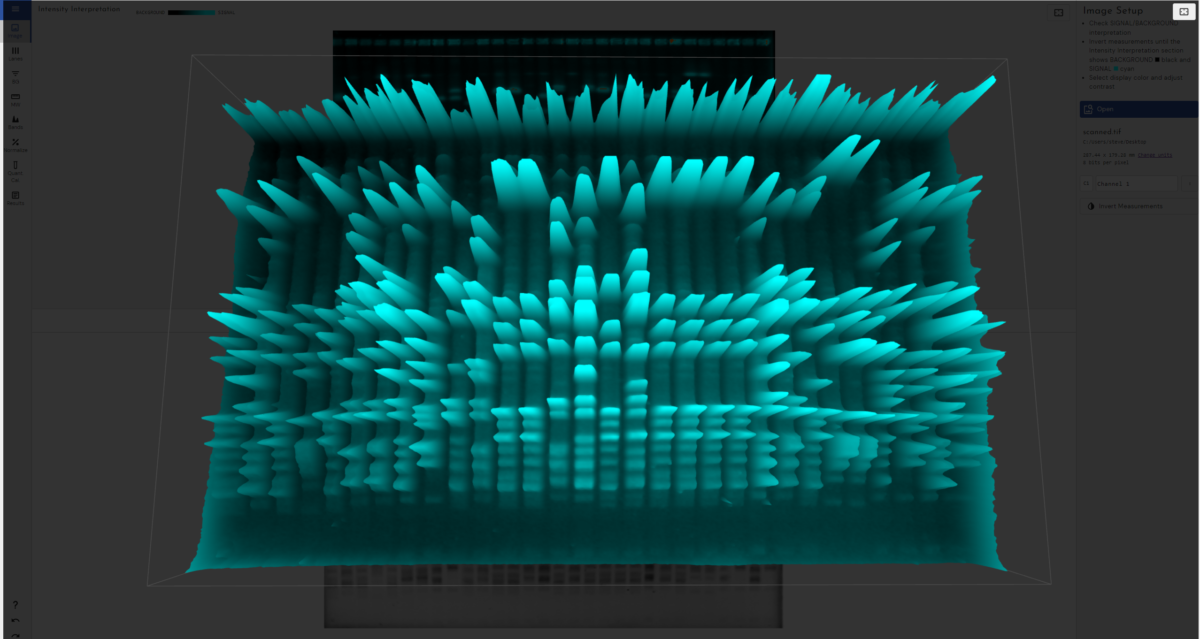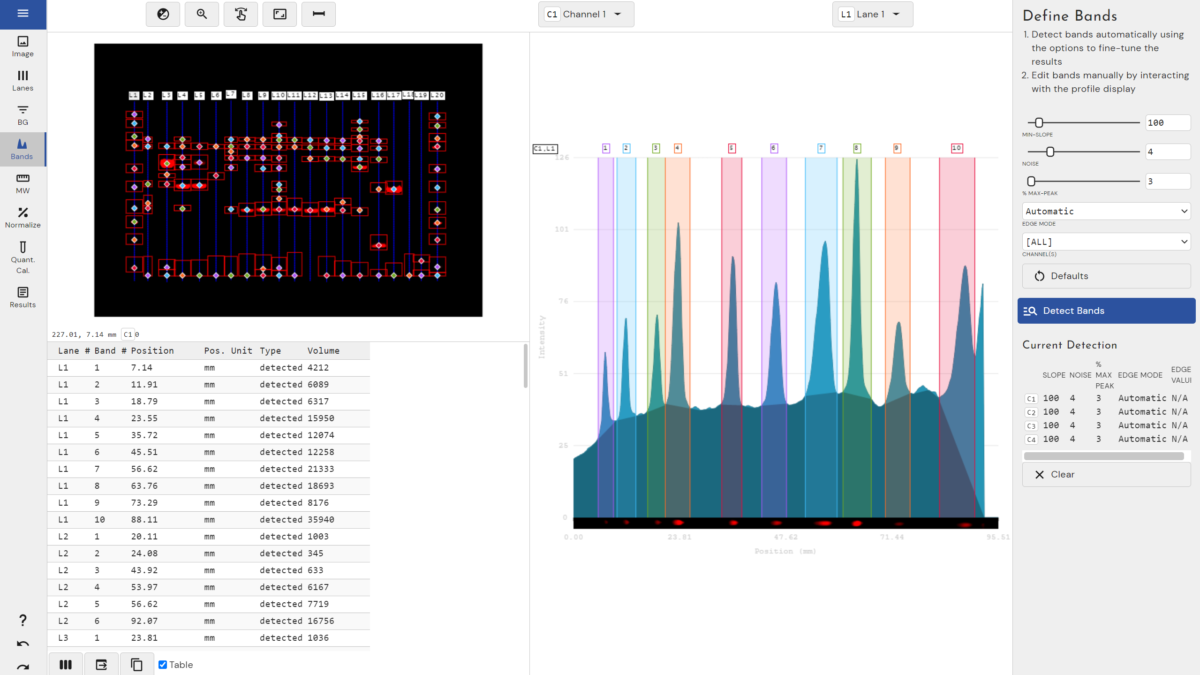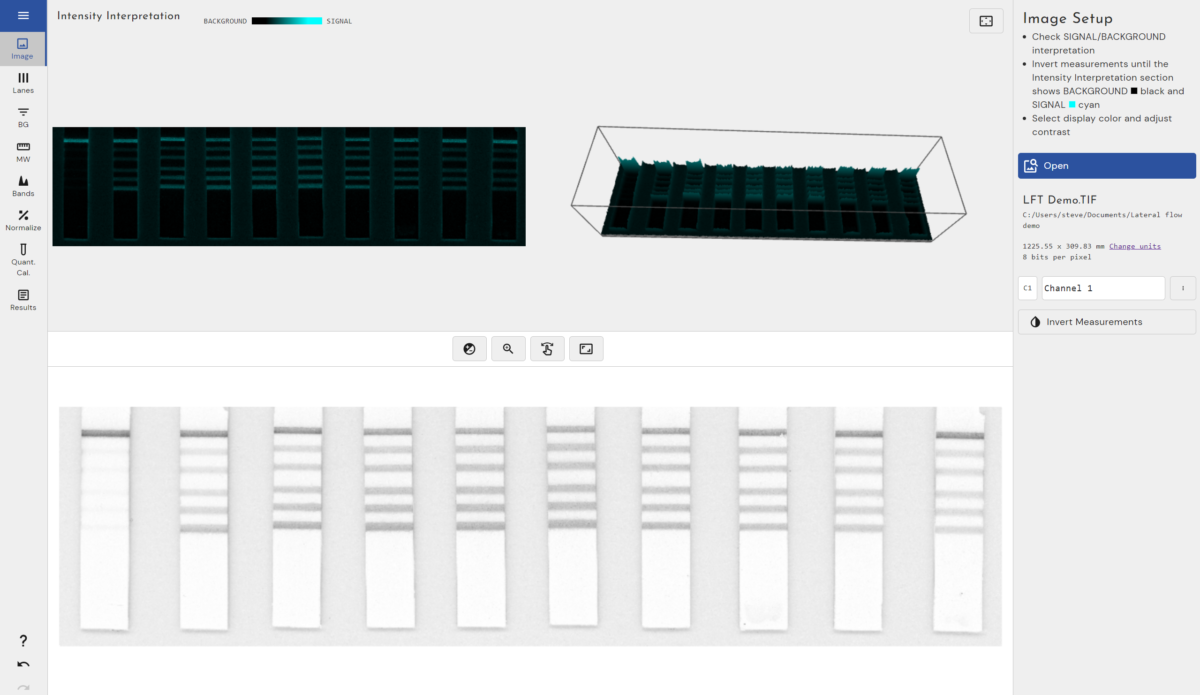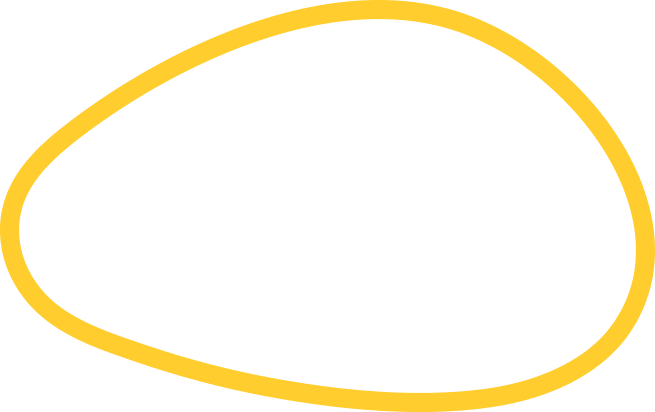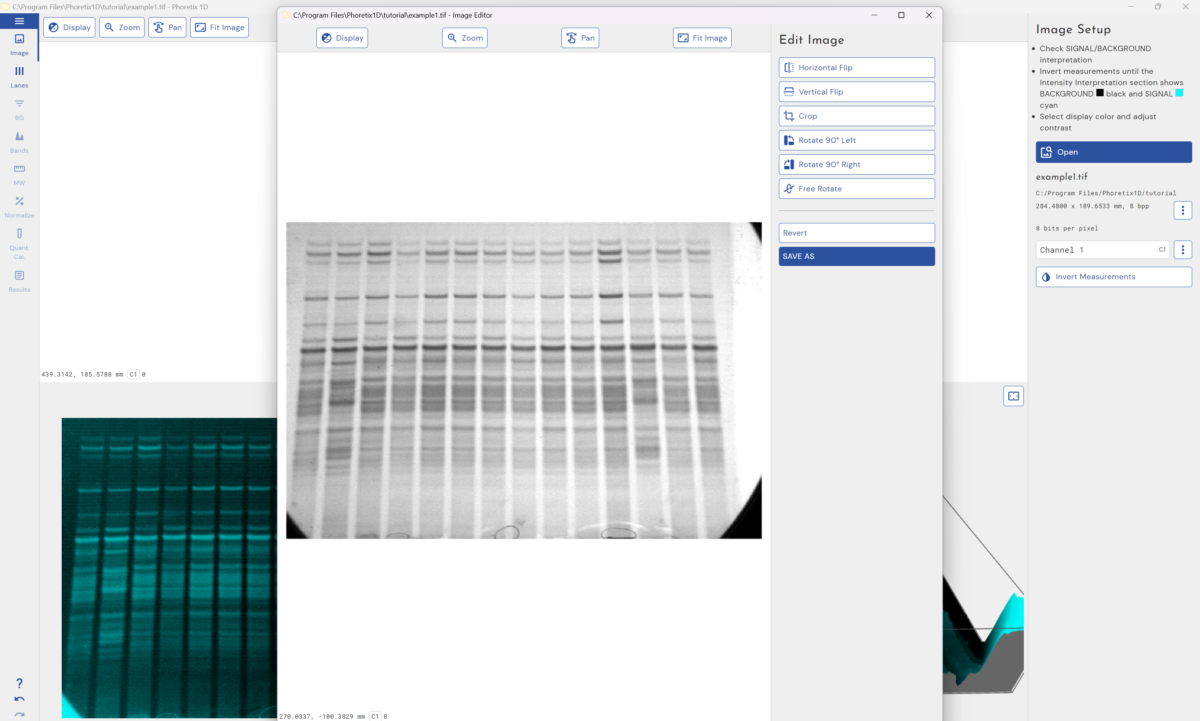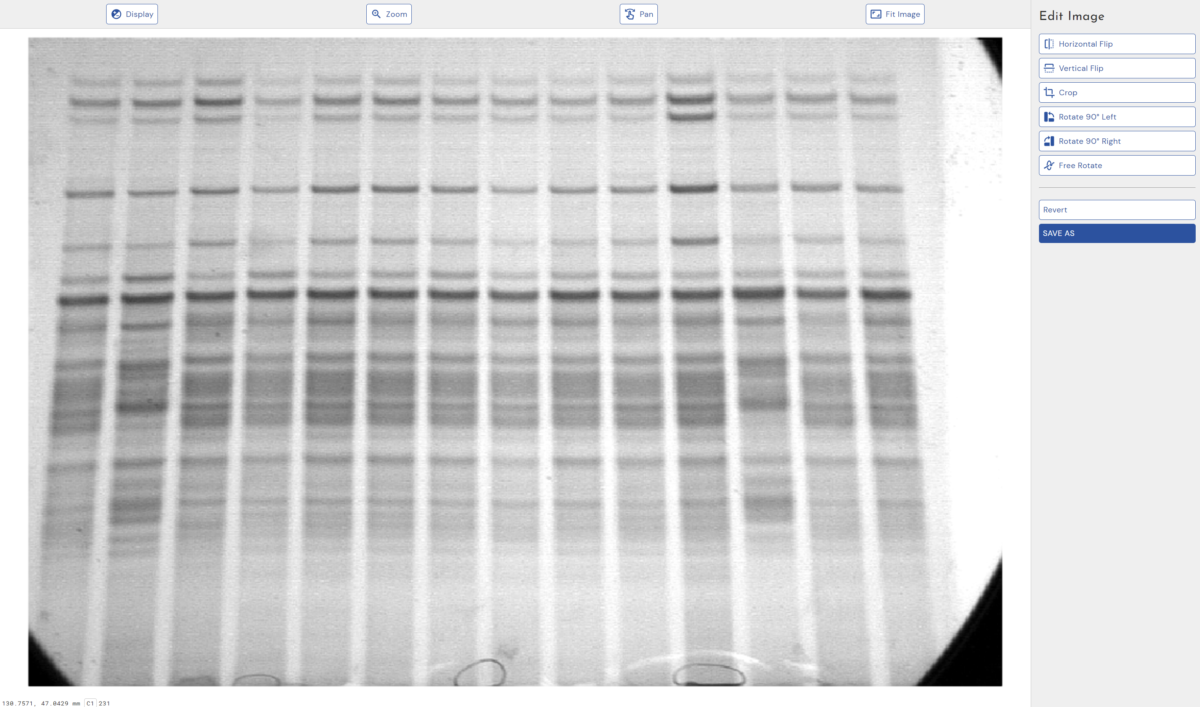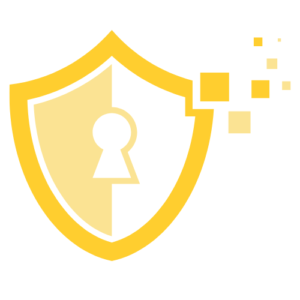Can I install on a machine with no internet connection?
Yes you can. It is called a manual installation and if there is no internet connection on registration then you just follow the instructions to get a license working. If you plan to use the machine offline then make sure it is unplugged on registration.
What Operating Systems can I use?
Phoretix 1D is compatible with Windows Vista, Windows 7, Windows 8,Windows 10 and Windows 11, both 32 and 64 bit versions. It's also compatible with both Intel and M1/M2 and M3 CPU based Macs up to macOS Sequoia
Why does Automatic Lane Creation fail on my gel?
There could be several reasons why this happens. It could be because
The lanes are short or have very few bands
The lanes are too close together so the algorithm cannot split them
The lanes are not quite the same width which is an assumption the algorithm uses
The resolution of the image is very low and there is not enough band information
Using an AOI for lane detection can help (just draw a box when in automatic detection mode) or simply try to create the lanes manually.
How does Molecular Sizing work?
Each lane has its own calibration curve calculated from where the iso-molecular weight lines (grey) cross the centre of a lane. With only one standard lane these curves are usually the same as the lines just run horizontally across the gel. However with more than one standard lane it joins up the bands of the same value and so the lines can be slightly off horizontal depending on the gel. This allows our molecular sizing algorithm to accurately calculate MW even with gels that haven't perfectly horizontally (as is the case with "smiley" or "frowny" gels).
Why use different curve fit types?
The default curve fit is cubic spline. This curve type creates a smooth curve passing through all points. It has no defining equation. This option can be somewhat over sensitive to inaccurate mappings but will guarantee that the results are as expected from where the iso-molecular weight lines(yellow) cross the lanes. First order Lagrange is similar but uses straight lines.
The other main option used historically is the Linear Log equation which is a straight line calculated from the log of the Molecular Size. This is theoretically correct but can lead to misleading results due to any inaccuracy of the curve fit. Even curves with high R2 results can still have problems.
What is the name of the curve fitting algorithm?
We use an iterative algorithm called Levenberg-Marquardt to get the results for the curve fitting equations. Cubic Spline and First order Lagrange are also well defined algorithms.
My image does not look like the image I captured. Why?
A histogram of all pixel values is created. Then the default auto contrast is created from the value of the histogram after 0.5% of all pixels and at 99.5% of all pixels. This stops outliers or scanner noise affecting the result but it can look a little different.
If the image has calibration or an encoding (from Cytiva or Fujitsu scanners) then the converted values are used by default for the image.
Note: Contrast does not affect the values used in any calculations, these are always taken from the raw image data stored at the file level.
My profile is upside down. What can I do to fix it?
Using the "invert measurements" button within the first stage of the workflow you can invert the image to restore your profile.
What file formats can the software support?
The software can load in .tif, .tiff, .jpg,.jpeg, .png, .gif, .gel, .img (Fuji), .bmp files.
When I load in my JPG file the image is inverted.
This occasionally happens as part of the loading function. Just press the invert button on the toolbar to see if reversed again.
What is Band Volume?
This is defined as the total value of all the pixels in a band with background subtracted. The pixels are shown on the image as between the 2 red lines (the band edges). Another way to look at it is as the area under the profile for the band (with background subtracted) multiplied by the lane width.
Where can you get the total volume of all the bands in a Lane?
In the results section of the workflow in the "Lane Information" section.

